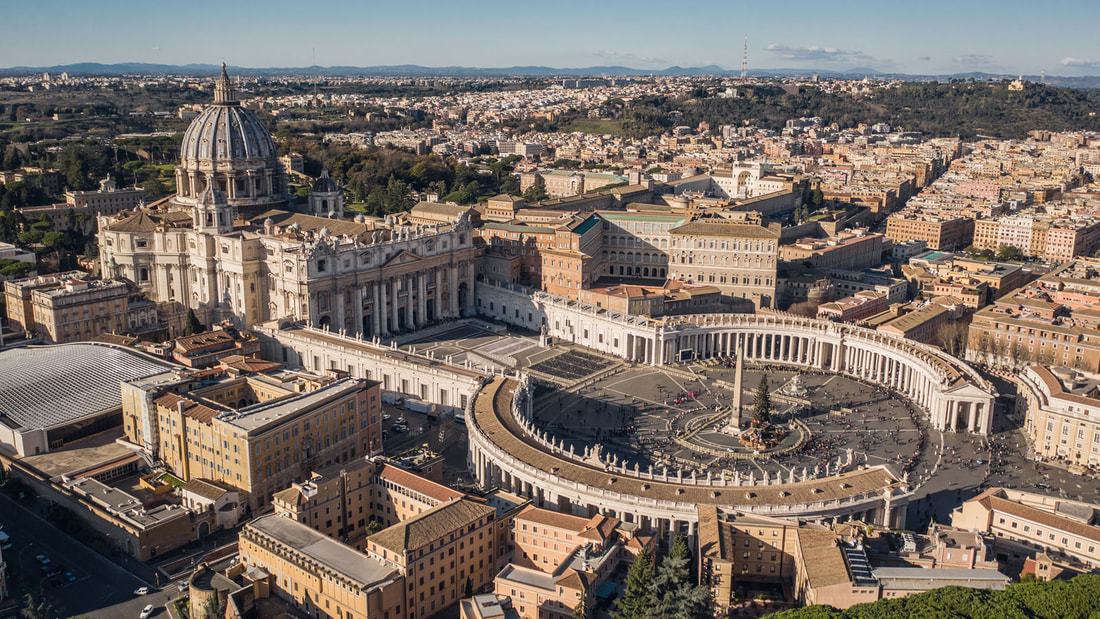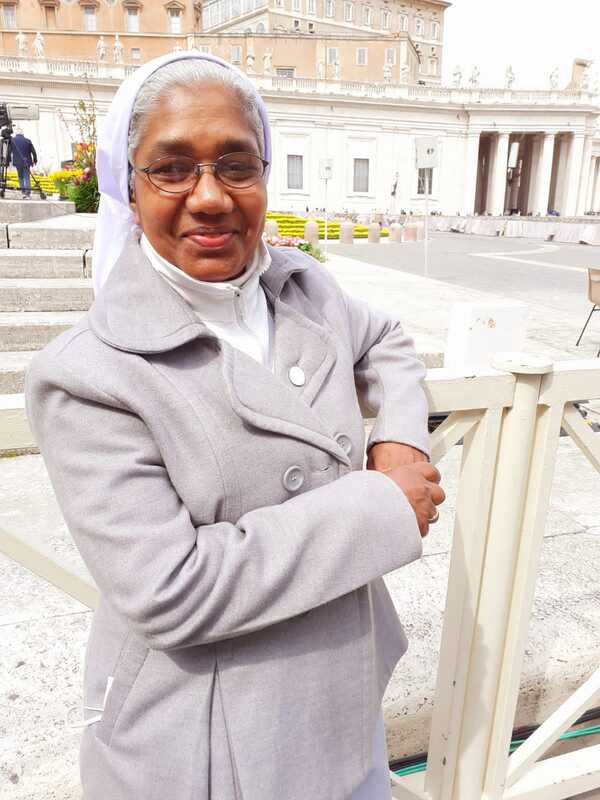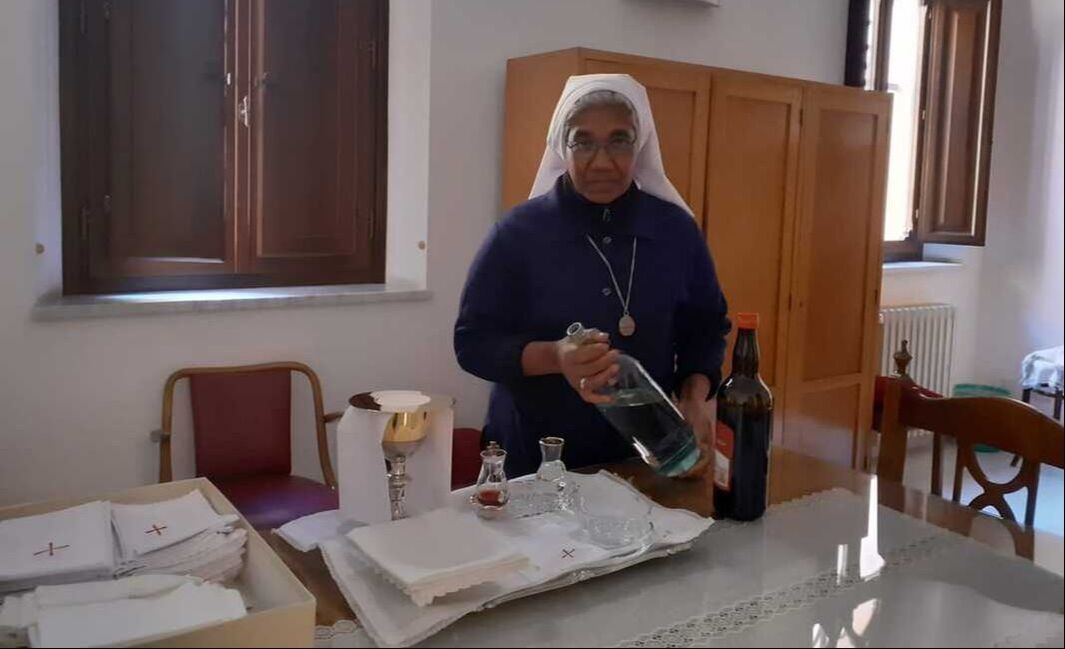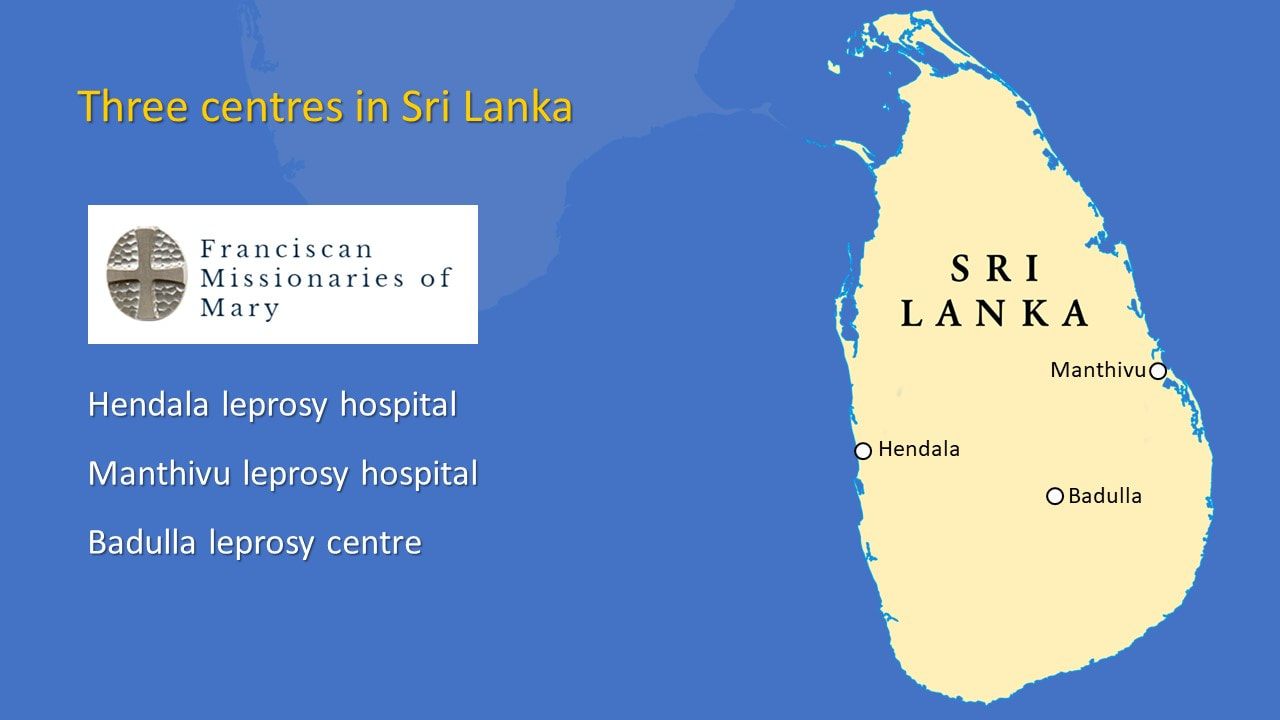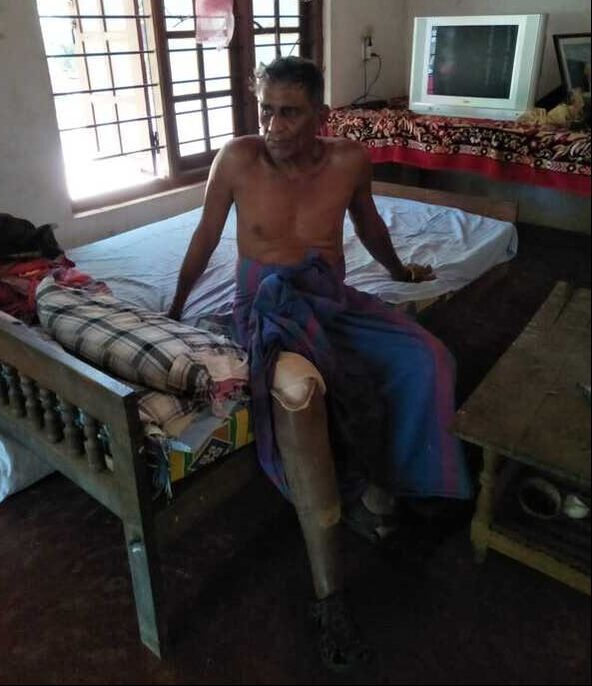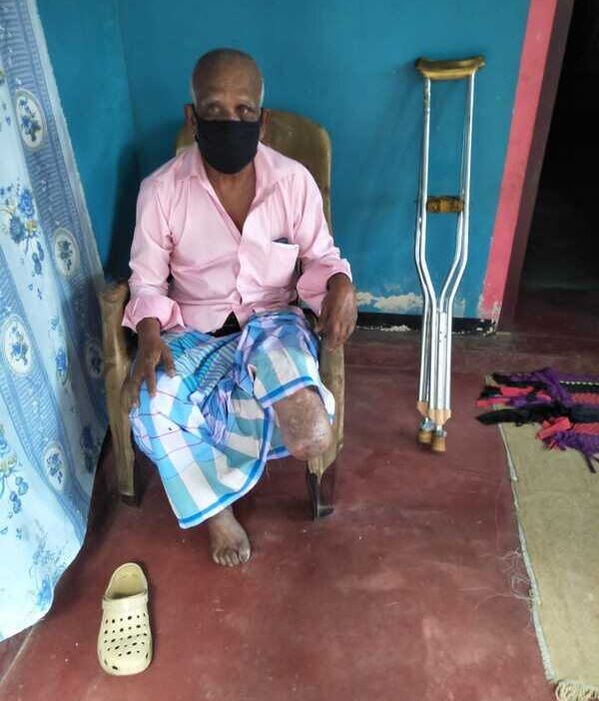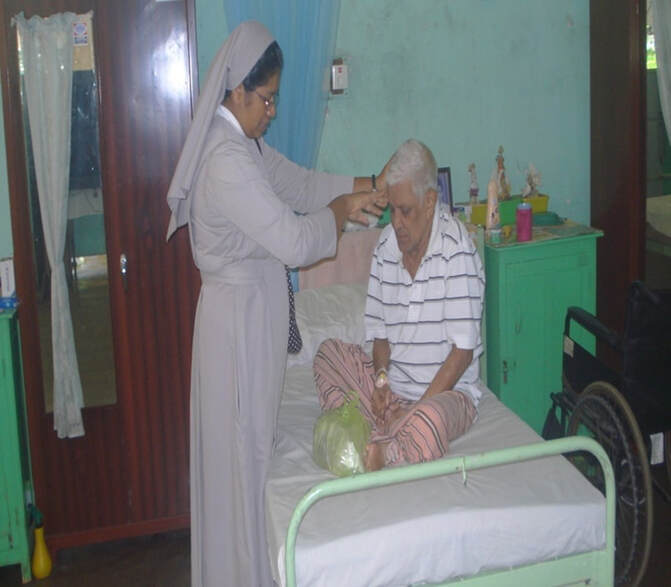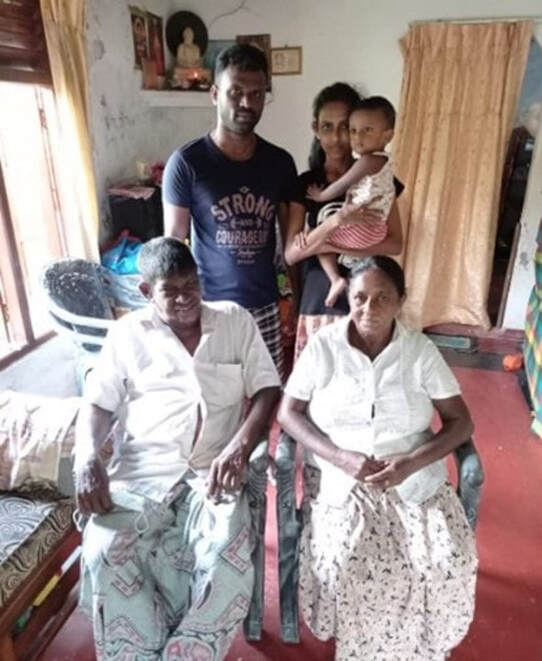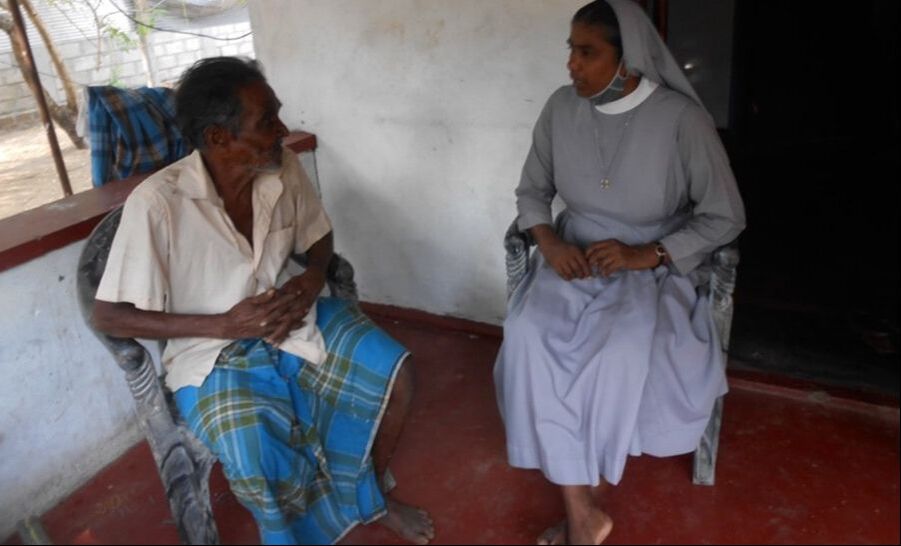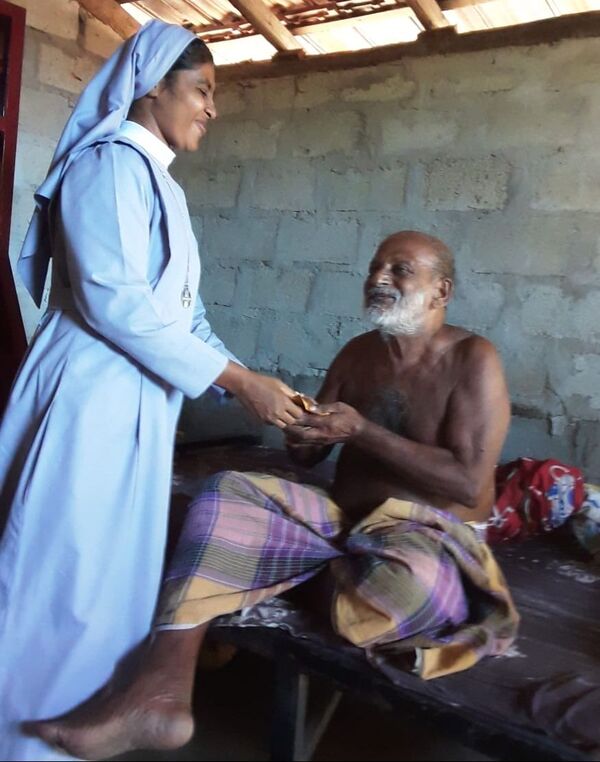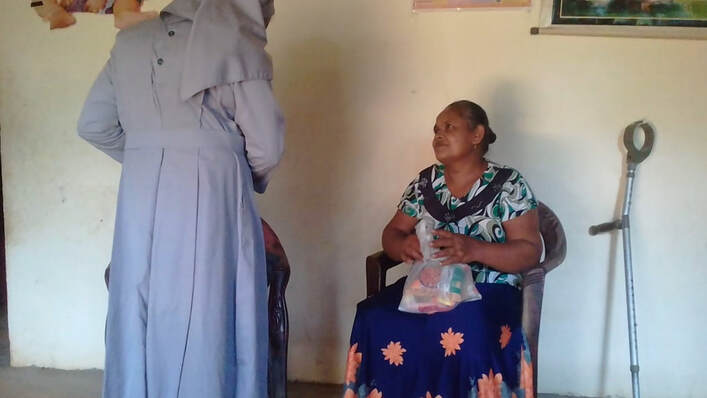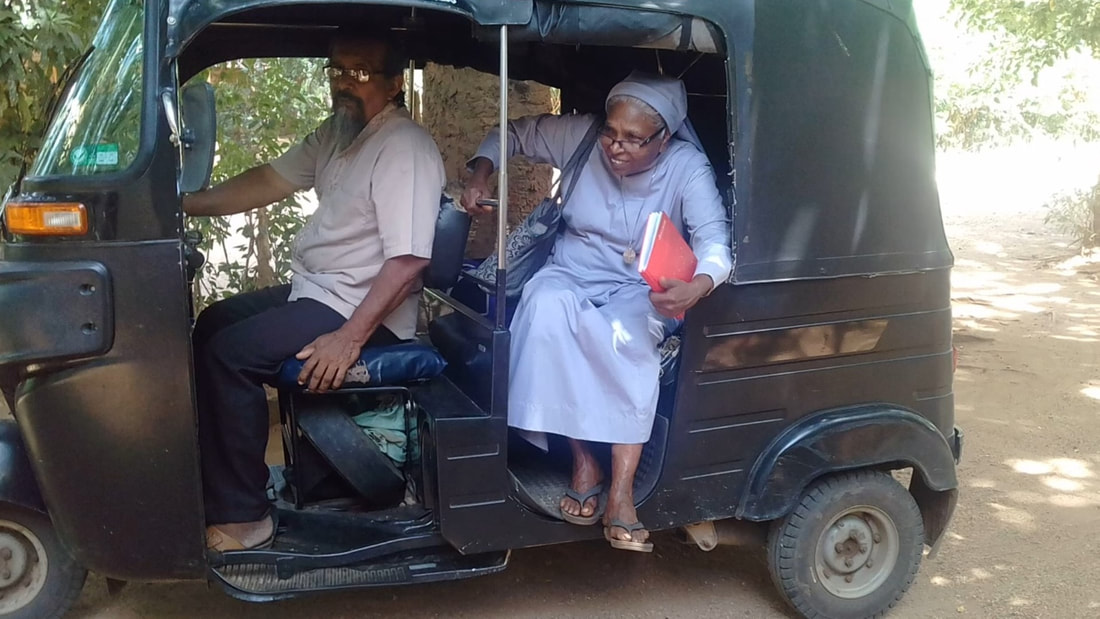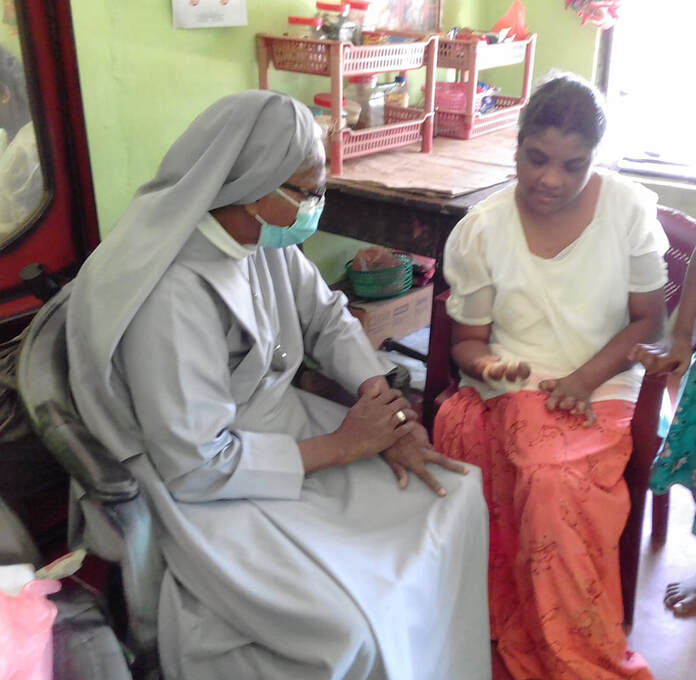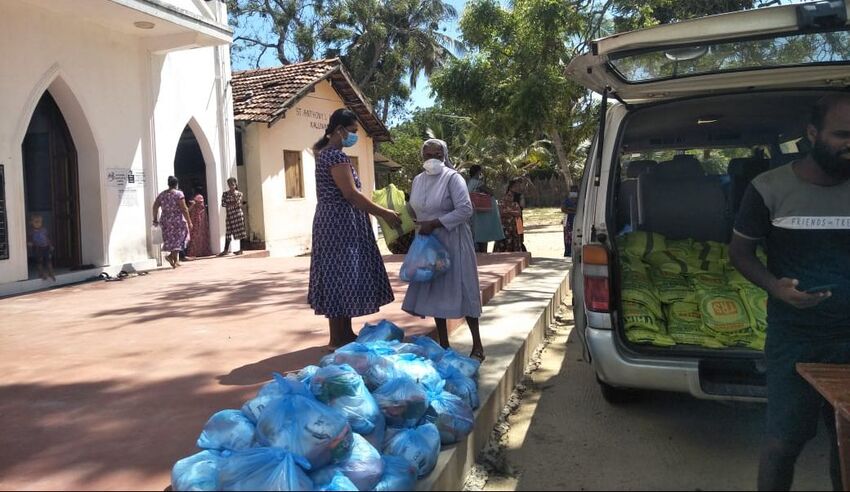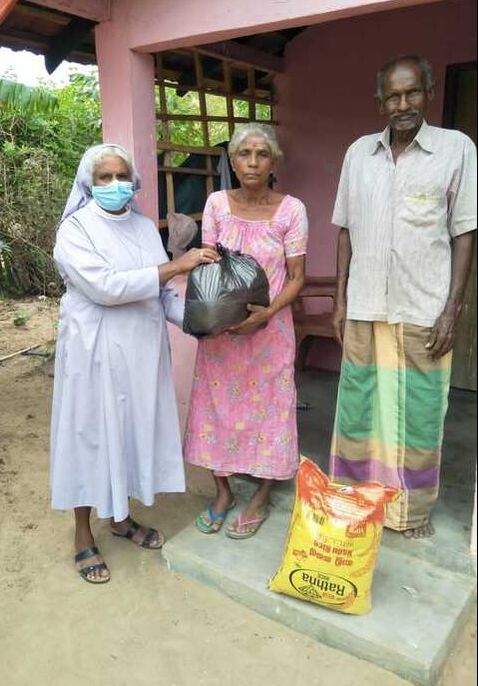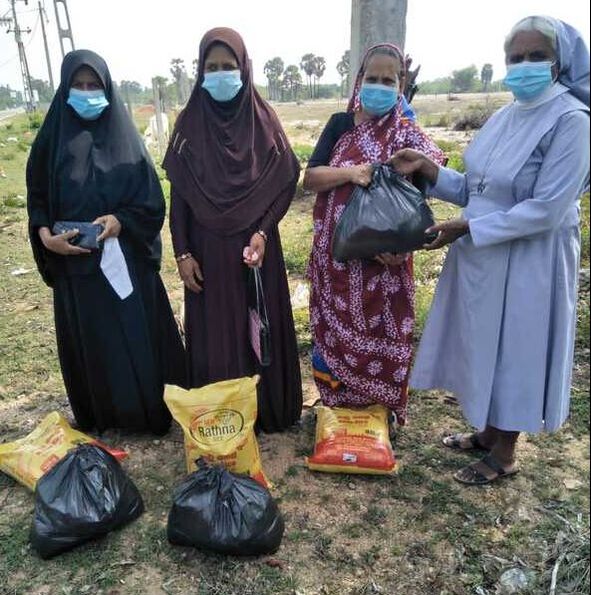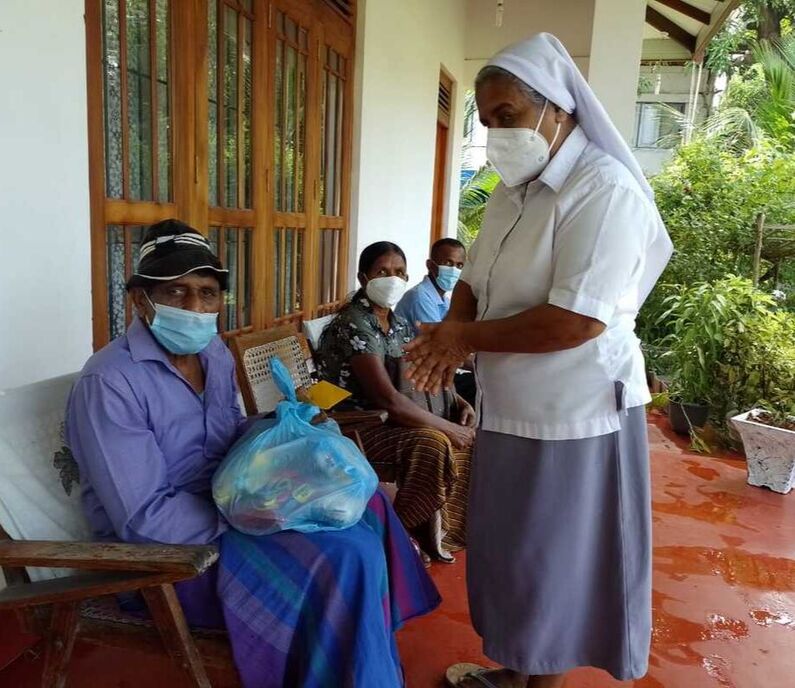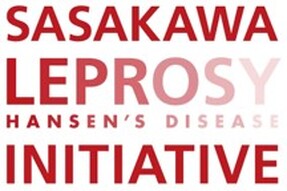Good afternoon. I am so happy to be here at the Augustinian Patristic Institute. My name is Sister Mary Bawani Chelliah from the Franciscan Missionaries of Mary, here in Rome. I would like to thank the Sasakawa Leprosy Initiative, the Dicastery for Promoting Integral Human Development of the Roman Curia, Raoul Follereau Foundation and Associazione Italiana Amici de Raoul Follereau, for organising this great symposium and inviting me to talk in this Best Practice session.
Today I would like to tell you about my twenty-year mission as a Leprosy Apostolate, in Sri Lanka and what happened there during the Covid-19 pandemic .
Here at our convent in Rome, my main mission is to serve our General House, the Mother House and I am in charge of the Chapel. Once a week I visit Caritas to help immigrants, to serve food and clean with other volunteers. On Sundays, I meet the Sri Lankan community in the church. But this was not always my world.
The Sisters of the Franciscan Missionaries of Mary in Sri Lanka work with three leprosy centres: Hendala leprosy hospital, in Wattala, Western Province, built in 1708, Manthivu leprosy hospital, Batticaloa, built on a small island off the east coast in 1921 and Badulla leprosy centre, in Badulla, built in 2016, to help patients and families with leprosy living in Central, North central and Uva provinces.
Now for some history, because I like teaching. The Sisters started to care for and nurse leprosy patients at the invitation of the Sri Lankan government in 1914. In those days, the hospitals were like quarantine centres, because when a person was diagnosed with leprosy they were quarantined for life. Then the Sri Lankan government took over the leprosy hospitals in 1964 but the Sisters did not want to give up their mission. They obtained permission to continue to visit people affected by leprosy and help in different ways. Today the Sisters visit leprosy patients in hospital, as outpatients who are getting treatment from the hospitals and those living with their families or alone in faraway villages.
Hendala and Manthivu leprosy hospitals still care for leprosy patients. There are many people affected by leprosy who live in the hospitals today. They have no place to go. They are elderly, spending the evening of their lives in hospital.
Some of the residents living here do not have families to visit them – and many have been left or abandoned. So, the Sisters visit them instead, listening to their stories, and helping them in any way they can and to feel that they are not alone.
The Sisters visit people affected by leprosy in the communities too. Most of these people and their families are poor, malnourished, uneducated, ignorant of many things happening in the Society. Their children are not interested in going to school and they live in poor unsanitary conditions. Many others are elderly, alone and living in great poverty.
But this is what we do for people who are living alone or with families in faraway places: we give out dry rations, medicine, and nutritional supplements, we dress wounds, we help buy clothes, we help with children’s education, we renovate houses.
We start up self-help projects (such as for cultivation, poultry, fishery, grocery), we help get better water, we help people with leprosy disability to take exercise, we give travel expenses to help patients go to government clinics and hospitals, we give out wheelchairs, shoes and glasses to those who need them and, most of all, we listen to their stories.
The Sisters give something even more valuable even than provisions and care. People with leprosy can share their story, their thoughts and fears with the Sisters in confidence. In the Sisters they find someone who will listen and care.
In this way, the Sisters make sure that these patients live with dignity, and know they are also children of God.
There are some instances where people affected by leprosy are afraid of our visits due to social problems. They think that their neighbours or villages will get to know about their leprosy and reject them and their families. In these instances, we find some other ways to meet. For example, inviting them to visit our convents or nearby places where we can attend to their needs.
The Sisters visit once a month or according to the needs of the patients and their families. People affected by leprosy often live in remote areas. At times it takes four to five hours to reach their homes. It can be a long and difficult journey. It can take a full day to visit one or two families. But the Sisters carry out this mission very happily. They forget any tiredness when they see the smiling faces of the patients and their families.
But what happened to people with leprosy and the Sisters during Covid-19 times? During the pandemic, the Sisters’ mission was challenged by many obstacles. But travel restrictions imposed by the government did not stop our visits even though the number of visits was reduced. Some of the patients were given mobile phones to stay in contact. For others, money was paid directly to their bank accounts. Some were helped through the local parish priest and when possible, supported by neighbours. So, the Sisters did not keep quiet, even though the virus was spreading and taking many lives every day, especially during the second wave of the pandemic.
Covid-19 pushed leprosy communities to the back of the queue and out of mind. The Sisters made sure that they were not forgotten and had what they needed to survive.
People with leprosy live in considerable hardship, even if their community is unaware that they are affected by leprosy
Taking rations was particularly important during the pandemic.
Because many people with leprosy are rejected by their families and communities, they were less likely to have anyone to depend upon during the pandemic. The Sisters visited instead and took provisions during lock down.
The hospital residents themselves were concerned about the safety of the Sisters during the second wave of the virus. They saw that the Sisters lives were in danger and did not encourage them to visit even though they found it difficult to meet their daily needs too. Thanks be to God, neither Sisters nor patients were affected by the virus and, God permitted us to help our dear patients continually, through new ways, bringing a ray of hope and happiness in this difficult period.
I wanted to mention the financial crisis and unrest in Sri Lanka which also challenges us to continue our mission. With the financial crisis, the resources given to leprosy is less and the number of children and adults infected by leprosy is increasing. Travel restrictions and food and medicine shortages jeopardise their mission. The Sisters have had to limit visits to families. But with dedication and commitment, our Sisters still engage in this mission, which is very dear to us as Franciscans.
Today there are more than one hundred families who are under our care. We also work with SUROL (Society of Upliftment and Rehabilitation of Leprosy) a non-governmental organization in Sri Lanka. We help SUROL to reach out to families affected by leprosy, as we go to faraway places in search of people affected by leprosy.
I am very glad to come here and share our experiences as Sisters of Franciscan Missionaries of Mary, as we directly deal with leprosy patients and people whose lives are affected. God has created us an incredibly beautiful world and asked us to share our life with Him and every living being, leaving no one behind. It is our responsibility to go forward taking hands with everyone, especially with those who have been victims in one way or the other. St. Francis Leprosy Guild helped us from the beginning of our mission and continue to help us to help the patients today. We salute St. Francis Leprosy Guild and all the donors for this great support. Without them we could not have done this mission for many long years. Once again, I thank Sasakawa Health Foundation and St. Francis Leprosy Guild for giving us this opportunity to share in this second international symposium.
Thank you for listening!

